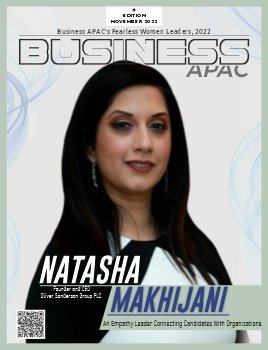Developing an efficient savings plan is critical for establishing financial stability and meeting long-term objectives. In India, where economic variety and financial priorities differ greatly, a customised savings plan may serve as both a safety net and a steppingstone to financial freedom. A plan like this may help you manage your financial risks, prepare for crises, and support key life events like school, marriage, or retirement.
What are the essential features of an effective savings plan?
Read on to understand effective savings plan –
Realistic goal setting
Setting financial goals implies that you define the goals and the time limit for their achievement. This process is guided by the SMART criteria: Specific (clear and well-defined), Measurable (quantifiable to track progress), Achievable (realistic and attainable within available resources), Relevant (aligned with broader life objectives), and Time-bound (having a defined timeframe). For example, if you want to be able to buy a house, determine its cost, how much money you need for a down payment, and set a deadline to accomplish this.
Budgeting
With a detailed budget all income (salary, dividends, other earnings) and all expenses (household, education, leisure) are tracked. It gives you the power to track where your money goes and pinpoint the areas you can trim or save more. Regular budgeting makes it possible to avoid overspending and meet savings goals. There are plenty of apps and tools to support the process of the detailed budget tracking and planning.
Emergency fund
An emergency fund should be enough to cover at least six months of expenses and serve as a financial safety net whenever one loses a job suddenly, falls ill, or other unforeseen events arise. This fund should be readily available, either in a savings account or a liquid mutual fund, so that the money can be withdrawn without severe penalties.
Diversification
Diversification alleviates risk by investing in different financial instruments such as equities, bonds, real estate, and mutual funds. This strategy helps to limit the downside risks by balancing the losses of one investment with positive or stable performance of another.
Regular reviews and adjustments
The financial environment and markets change, so you must reassess (or at least on an annual basis) your savings plan. This can consist of changing your asset mix, rebalancing your portfolio or reviewing goals as personal situation changes.
Tax efficiency
In India, various savings instruments offer tax advantages which can enhance returns. Equity Linked Savings Schemes (ELSS), Public Provident Fund (PPF), and life insurance premiums provide deductions under Section 80C of the Income Tax Act. Utilizing these can reduce your taxable income and increase your effective savings.
Liquidity
While it’s important to invest with a long-term view, having some liquid investments ensures you can meet unexpected financial needs without incurring losses or penalties. Money market funds and high-interest savings accounts are examples of liquid assets.
Long-term perspective
Investments such as ULIPs (Unit Linked Insurance Plans) offer the dual benefits of insurance and investment growth, suitable for long-term financial planning. They can provide higher returns over an extended period but require commitment and understanding of the associated risks and costs.
ULIP return calculator
Tools like ULIP return calculators help you estimate potential returns from ULIP investments based on variables such as monthly contributions, tenure, and expected return rate. These tools aid in planning by providing a clearer picture of how your investments could grow over time.
Automatic savings
Setting up automated transfers to savings or investment accounts ensures consistency in saving. It reduces the temptation to spend what you may otherwise save, and over time, this can significantly contribute to wealth accumulation.
Risk assessment
Understand your personal risk tolerance—how much volatility you can handle in your investments. This assessment will guide the types of products suitable for your portfolio, balancing between risk and potential returns.
Regular contributions
Regularly contributing to your savings exploits the benefit of compound interest. The more frequently you save, the quicker your money grows due to the compounding of earnings on both the principal and accrued interest.
Debt management
Prioritizing high-interest debt repayments, like credit card balances, is crucial. Minimizing these debts frees up more resources for savings and reduces the total interest paid.
Insurance coverage
Adequate health and life insurance prevent catastrophic financial impacts in the event of illness or death, safeguarding your family’s financial future.
Investment in health
Investing in comprehensive health insurance plans can mitigate the risk of high medical costs, which are a significant factor in financial planning in India.
Educational investments
Plans like Sukanya Samriddhi Yojana for girls provide a secure future through tax-efficient savings specifically for a girl child’s education and marriage expenses.
Retirement planning
Tools like the National Pension System (NPS) offer structured retirement savings that are tax-efficient and aim to build a substantial corpus by retirement, providing financial security in old age.
Professional advice
Consulting with financial advisors can provide personalized insights and strategies, tailored to your financial circumstances and goals. They can offer guidance on complex financial products and changing regulations.
Flexibility
Life is unpredictable. A flexible savings plan can adapt to changes such as a new career, a growing family, or relocation, ensuring that it remains effective under various circumstances.
Conclusion
An effective savings plan is not just about stashing away money; it’s a comprehensive approach to managing your finances proactively. It encompasses setting realistic goals, making informed investment choices, and preparing for both short-term challenges and long-term aspirations. As life evolves, so should your savings strategy, adapting to provide security and comfort regardless of economic conditions. By incorporating these features into your savings plan, you’ll pave the way for a financially secure and fulfilling life, making each financial decision a steppingstone towards your ultimate objectives.
Also Read: Understanding the Importance of Budgeting: Taking Control of Your Finances




















